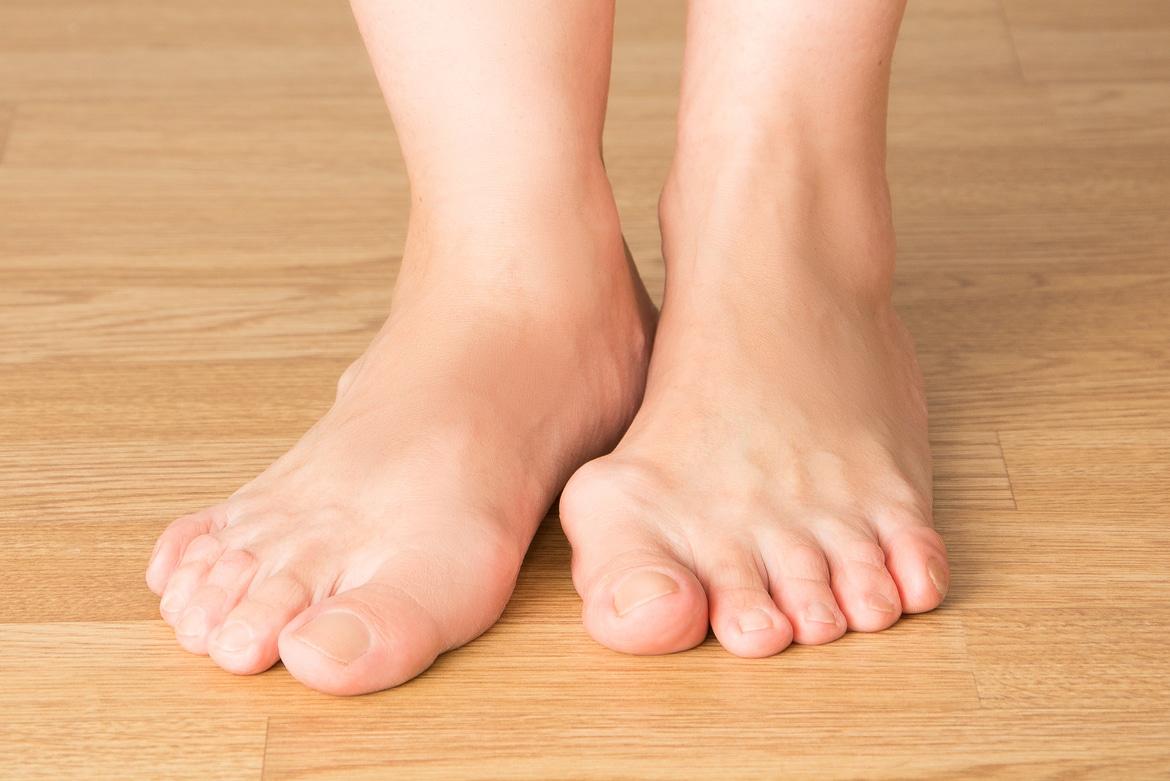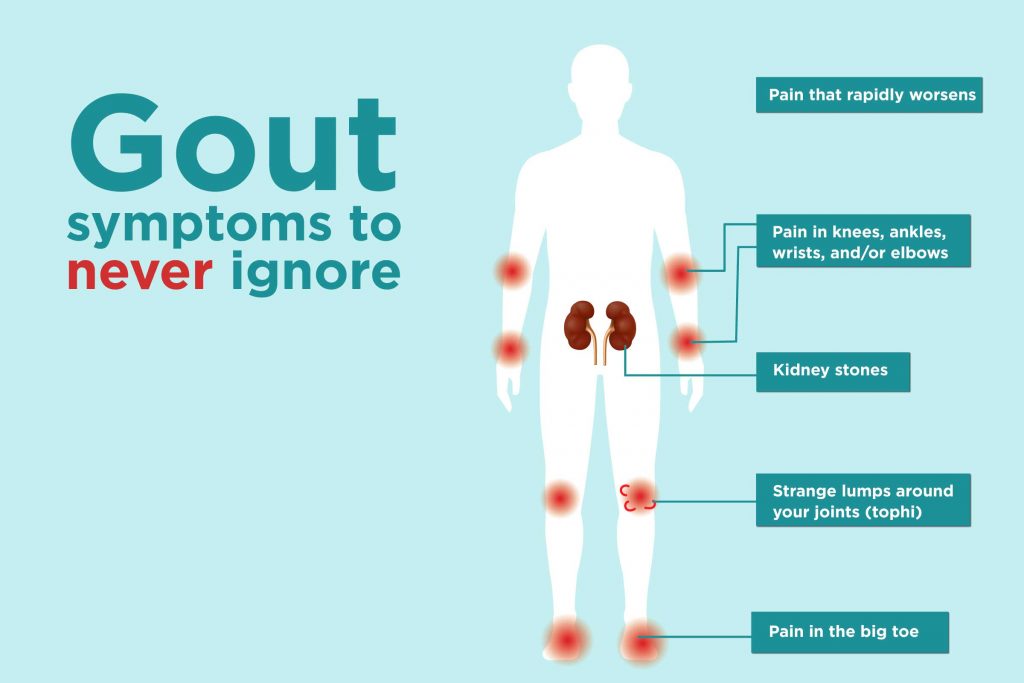
What is The Symptoms Of Gout Should Not Be Ignore?
အောက်ဆုံးထိ ဆွဲကြည့်ပေးကြပါ ခင်ဗျာ
Some time ago, gout was known as the “sickness of lords” since it was believed to be more normal among well off, overweight men who could stand to revel in rich food sources and liquor. Your social class or financial situation are no longer relevant to your risk of developing gout, which is on the rise. Diet and obesity remain important gout risk factors. Frequency of gout dramatically increased between the 1960s and 1990s; Currently, it affects nearly 4% of adult Americans.
A type of arthritis known as gout is characterized by severe and sudden bouts of inflammation. Gout happens when there is an over the top substance called urate in your blood (known as hyperuricemia). Uric acid crystals build up in your joints as a result, causing the characteristic pain of gout. Purines, substances that are naturally occurring in your body and in certain foods, are broken down by your body into uric acid. Although diet alone does not cause gout, certain foods and beverages may aggravate the condition. Gout is most likely caused by a combination of other risk factors or conditions that cause uric acid to build up in the body, such as diabetes or kidney disease.
According to Joseph Huffstutter, MD, a rheumatologist at Arthritis Associates in Hixson, Tennessee, women can get gout as well as men, and the likelihood of that happening increases after menopause. To put it succinctly, anyone can develop gout as long as the body does not properly break down uric acid so that it can crystallize in the joints.
Gout is very treatable, but you have to know you have it in order to treat it, and the signs of gout aren’t always obvious.
Dr. Huffstutter asserts, “Gout is considered a great imitator in rheumatology circles because it can present in many different ways.” Talk to your doctor if you experience any of the following symptoms of gout. In order to determine whether gout is to blame, you may require testing (such as aspiration and joint fluid testing).
Pain in your big toe

This is the most obvious symptom of gout because it is the classic sign of a gout attack. Dr. Huffstutter explains, “The majority of uric acid is a byproduct of normal metabolism, but some comes from diet.” Uric acid will build up and form crystals if your body is no longer able to break it down properly, possibly as a result of kidney disease, diabetes, a hypertension medication, or simply getting older. Those crystals frequently move to the toe, where your body attacks them as if they were foreign invaders. The outcome: redness, warmth, and excruciating pain According to Dr. Huffst, “even having a bed sheet touch [your toe] is extremely uncomfortable.”
Pain in your knees, ankles, wrists, and/or elbows
Uric acid crystals can form in any joint in the body, but they typically form near the big toe. As a result, joint pain that is severe and unrelated to other symptoms may indicate gout.
According to Dr. Huffstutter, about 25% of gout patients suffer from “polyarticular” symptoms, which indicate that they experience pain in more than one joint at once.
He adds that because gout can mimic other conditions like rheumatoid arthritis, it is especially difficult to diagnose when it manifests in multiple joints.
Intense pain that strikes in the middle of the night
Between midnight and 8 a.m., gout flares are twice as likely to occur than during the day. This can be caused by a number of different things, such as having a lower body temperature and being more dehydrated overnight, which can make it easier for uric acid to build up.
Pain that occurs in flares: rapidly worsens, then starts to ease up
If your knees have been stiff and painful every morning, you probably don’t have gout. Gout pain typically increases from 0 to 60 in less than 24 hours. Some people go to bed feeling fine and then wake up in great pain the next day.
Gout typically manifests as severe pain flares that subside within a few days to a few weeks. At first, gout flares may not occur for months or even years. However, if gout is not treated, flares can become more frequent, more intense, and more debilitating, affecting multiple joints at once. Patients frequently experience no symptoms and are in perfect health in the time between gout flares. When compared to a great number of other forms of arthritis, this pattern strongly suggests gout.
Fatigue/lack of energy
Whether you have never experienced a gout attack before or are a chronic or recurrent gout patient in the midst of a flare, you may feel so wiped out that it makes you feel like you have the flu. Additionally, you might have a fever and muscle aches.
Strange lumps and bumps around your joints
These mounds, which are referred to as tophi, are actually crystals of uric acid. Tophi are most common in people with chronic gout, so you probably had joint pain long before this happened. Dr. Huffstutter says that if you do get tophi, you should know that these aren’t permanent defects. You can get rid of these crystals by dissolving them with the right treatment.
Kidney stones
Excess uric acid can build up in the urinary tract and crystallize there, resulting in kidney stones if you have had a severe gout attack or have been living with gout for some time. Although kidney stones are more of a complication than a symptom of gout, your doctor should check your uric acid levels to see if you might have the condition.
However, you should be aware that blood uric acid levels alone will not diagnose gout: According to Dr. Huffstutter, a doctor should remove fluid from an affected joint during an attack and examine it under a microscope. Uric acid crystals will be visible if you have gout.
Reference: creakyjoints.org





2.4.25
Morning all 😻🌹
Gout is the common health problem…very useful information!
Thanks lots for sharing health knowledge and good song 😍
ကျန်းမာရေးဗဟုသုတအတွက်ကျေးဇူးပါ
Really helpful
Now I come to know kidney stones and gout has connection
You actually make it seem so easy with your presentation.
Than you.
Don’t ignore GOUT😉
Thank
Nice article 🦾
Appreciated health information!
Thanks you
I have seen people who have this problem, they even have to choose the shoes/ slippers 😔
Thanks for your patience. Be healthy and take care.
Thanks for your sharing
And good song